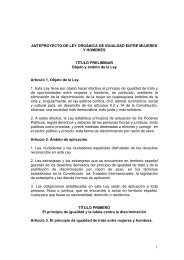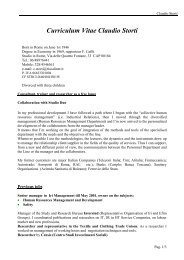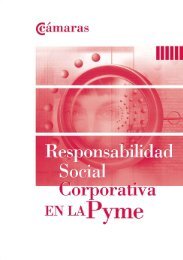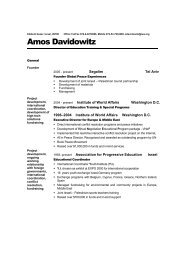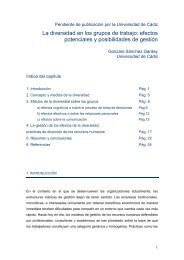Cultural dimensions - IMD
Cultural dimensions - IMD
Cultural dimensions - IMD
You also want an ePaper? Increase the reach of your titles
YUMPU automatically turns print PDFs into web optimized ePapers that Google loves.
Maznevski et al.: <strong>Cultural</strong> Dimensions at the Individual Level of Analysis 285in person and within orientation, such thateach individual’s scores for the items of thetwo or three scales within each orientationhave a mean of 0 and a standard deviationof 1. 4Comparisons of means To test the preferredrankings of variations within orientationswithin each culture, we conducted pairedt-tests for each pair of variations within eachof the Relationships, Environment, and Activityorientations. Within all orientations of allsamples, patterns of preferences were statisticallysignificant. These results are shown inTable 5 and will be discussed in the nextsection.To test for between-country differences,we first conducted a MANOVA, whichresulted in an approximate F of 19.31(Pillais), p < .0001. Univariate F tests showedsignificant differences between countries forall variations except for Relationships–collective.We continued with post hoc comparisonsusing Dunnett’s T, which is appropriatewhen variances are unequal (Levene statisticsshowed that the variances were unequal forall variations except Environment–harmony andHuman Nature–good/evil). Results for betweencountrycomparisons are shown in Table 6and will be discussed below.DiscussionOur results lead us to two major conclusions.First it appears that the items developed torepresent the cultural orientations frameworkdemonstrate reasonable, although notideal, internal consistency measures. Second,the within-country comparisons and thebetween-country comparisons appear toshed light on cross cultural research in severalaspects. Specifically, in this discussion wehighlight three important aspects: the comparisonof our results with patterns in previousresearch; an examination of the patternsobserved in light of the convergence/divergencedebate; and an exploration of possiblecultural transition and regional variation asreflected in the data.Comparison with EstablishedFindingsWell-established broad findings have beenpublished on only a few elements addressedby this framework and sample. Here we willaddress country clusters, individualism–collectivism,hierarchy (power distance), andcharacteristics of Chinese culture.Country clusters Ronen and Shenkar(1985) identified eight clusters of country cultures,based on a meta-analysis of previousattitudinal and perceptual research. Althoughthe Netherlands was not included in theiranalysis, the other four countries we sampledwere included, with Canada and the UnitedStates being in the Anglo cluster, Mexico inthe Latin American one, and Taiwan in theFar Eastern one. In their Smallest SpaceAnalysis, Latin American and Far Easterncultures were located next to each other,implying relatively close cultural proximitywhen compared with Anglo or Germanic cultures.Our Canadian and American samplesdiffered on only one of the 11 <strong>dimensions</strong>, andtheir within-country patterns were highlysimilar. The Mexican and Taiwanese samplesdiffered on three of the 11 variations, andtheir relative preferences for Relationships andActivity were similar, but were not similar forthe Environment. On the other hand, the twoAnglo countries differed from at least one ofMexico or Taiwan on nine variations. Thiscorrespondence with Ronen and Shenkar’s(1985) meta-analysis provides some preliminarysupport for the validity of the culturalorientations framework.Individualism–collectivism patternsConsistent with previous research (e.g. Hofstede,1980; O’Grady and Lane, 1996), ourdata show that the average or typical respondentsof the United States and Canadian



